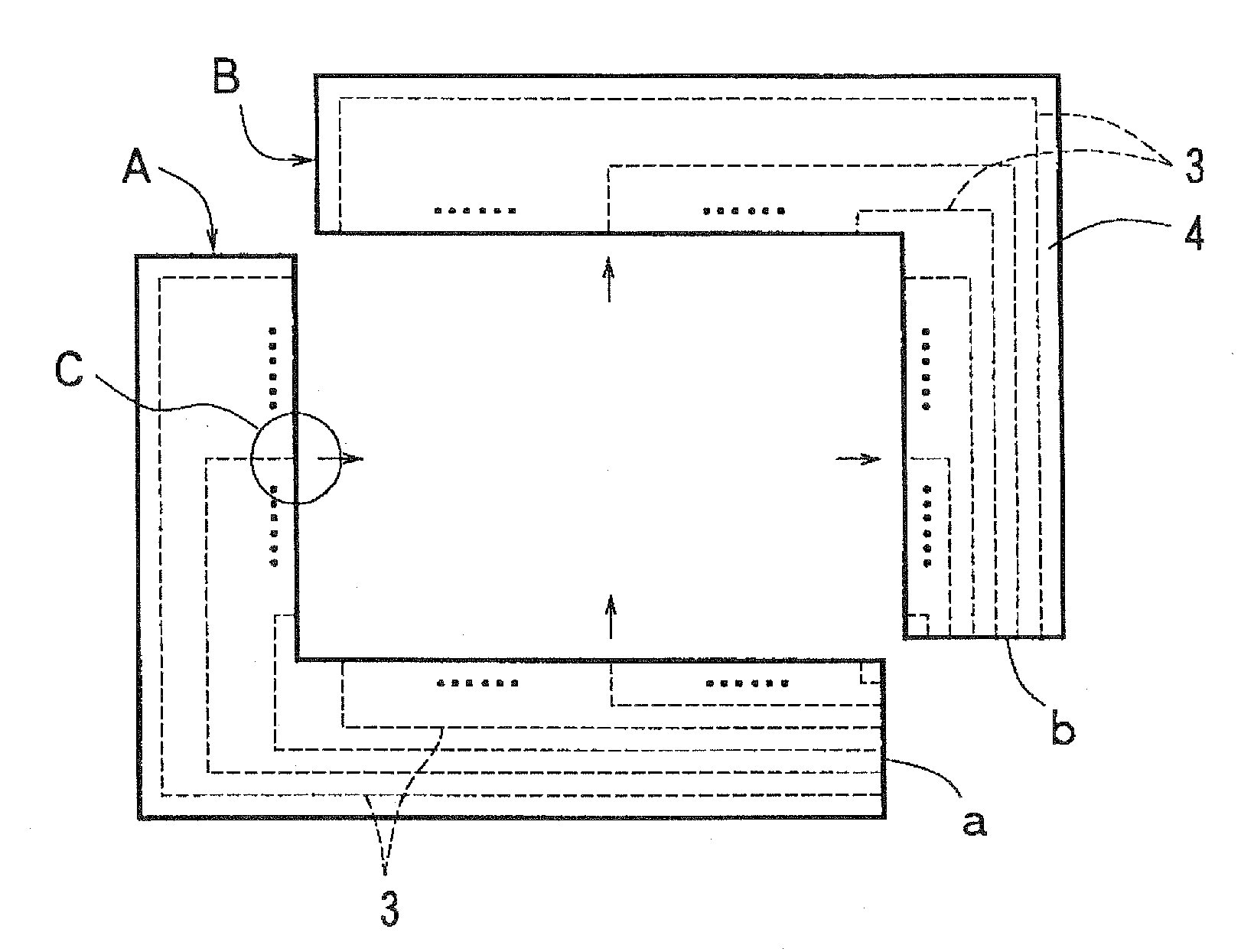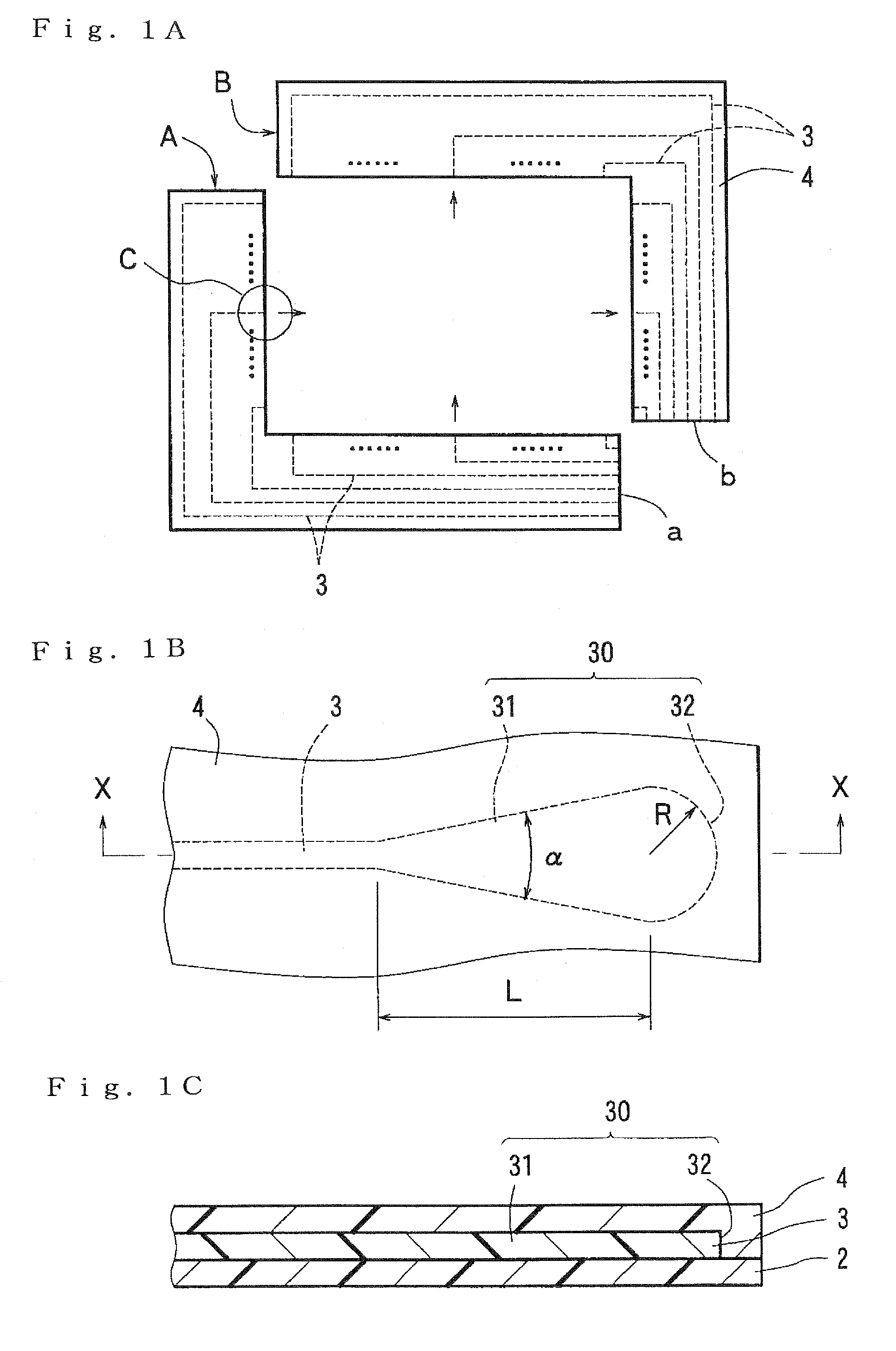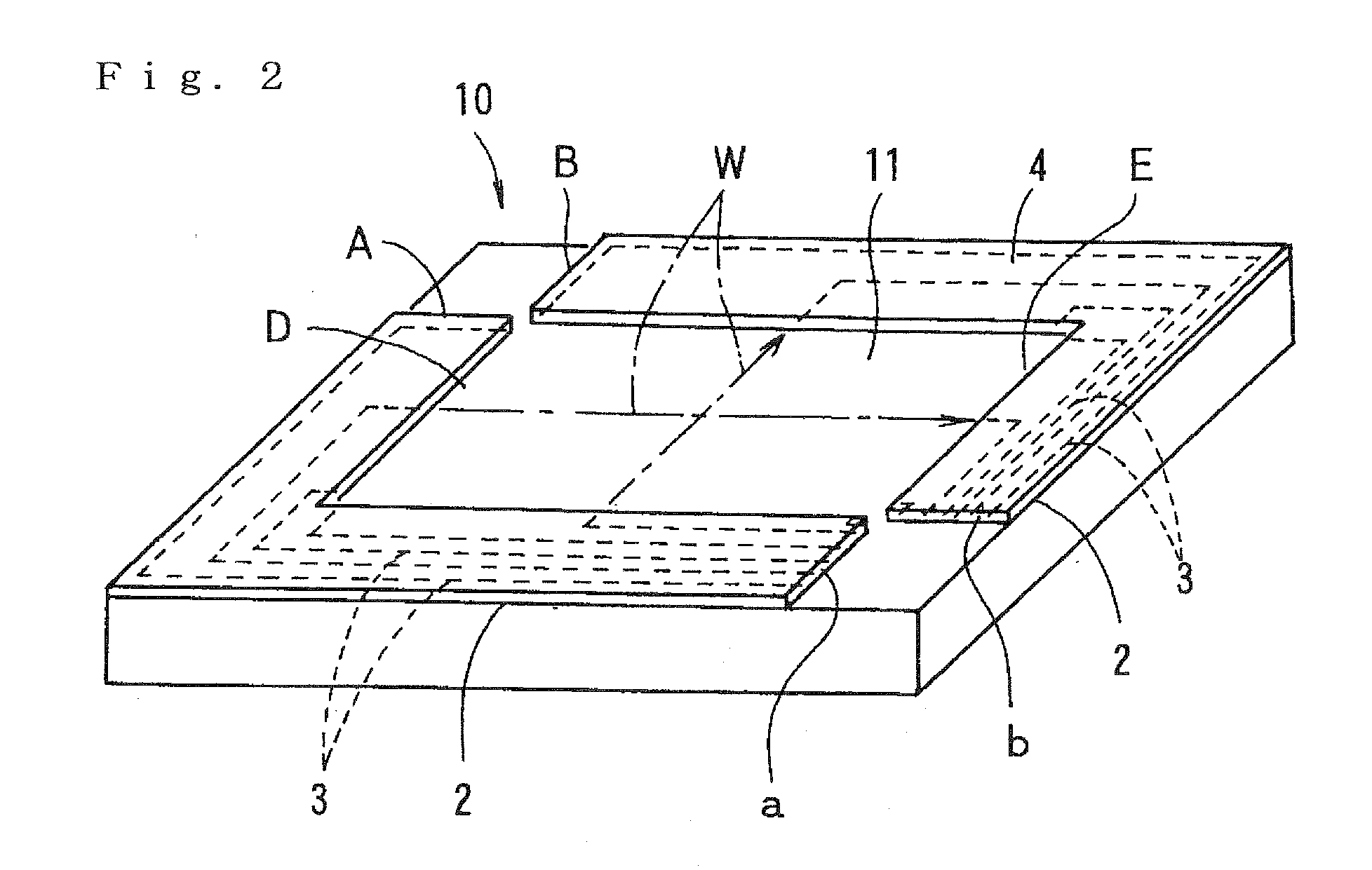Optical waveguide for touch panel and touch panel using the same
a technology of optical waveguides and touch panels, applied in optical waveguide light guides, instruments, computing, etc., can solve the problems of narrowing down the emitted light beams, reducing the size of the light-receiving region too much, and low optical transmission efficiency, so as to achieve the effect of appropriate optical transmission efficiency and easy light beam reception
- Summary
- Abstract
- Description
- Claims
- Application Information
AI Technical Summary
Benefits of technology
Problems solved by technology
Method used
Image
Examples
##ventive examples 1 to 18
Inventive Examples 1 to 18 and Comparative Examples 1 to 10
Material for Formation of Under Cladding Layer and Over Cladding Layer
[0063]A material for formation of an under cladding layer and an over cladding layer was prepared by mixing 35 parts by weight of bisphenoxyethanol fluorene glycidyl ether (component A) represented by the following general formula (1), 40 parts by weight of 3′,4′-epoxycyclohexylmethyl-3,4-epoxycyclohexane carboxylate which is an alicyclic epoxy resin (CELLOXIDE 2021P manufactured by Daicel Chemical
Industries, Ltd.)(Component B), 25 parts by weight of (3′,4′-epoxycyclohexane)methyl-3′,4′-epoxycyclohexyl-carboxylate(CELLOXIDE 2081 manufactured by Daicel Chemical Industries, Ltd.) (Component C), and 2 parts by weight of a 50% propione carbonate solution of 4,4′-bis[di(β-hydroxyethoxy)phenylsultinio]phenyl-sulfide-bis-hexafluoroantimonate (component D).
wherein R1 to R6 are hydrogen atoms, and n=1.
Material for Formation of Cores
[0064]A material for formation of...
PUM
 Login to View More
Login to View More Abstract
Description
Claims
Application Information
 Login to View More
Login to View More - R&D
- Intellectual Property
- Life Sciences
- Materials
- Tech Scout
- Unparalleled Data Quality
- Higher Quality Content
- 60% Fewer Hallucinations
Browse by: Latest US Patents, China's latest patents, Technical Efficacy Thesaurus, Application Domain, Technology Topic, Popular Technical Reports.
© 2025 PatSnap. All rights reserved.Legal|Privacy policy|Modern Slavery Act Transparency Statement|Sitemap|About US| Contact US: help@patsnap.com



